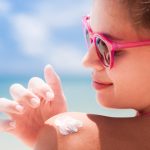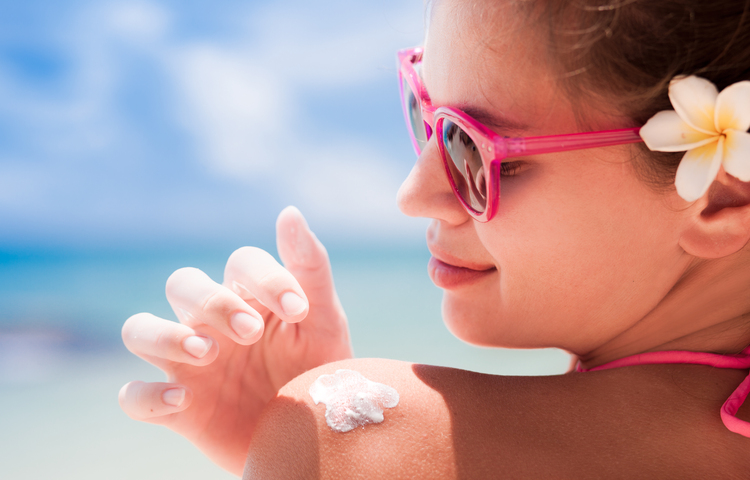UV-Safety Beyond High SPF: Exploring Photo Stability
Formulations

Many studies have reported that incorporating antioxidants like trans-resveratrol, β-carotene Vitamin E, Vitamin C, ubiquinone, and retinol can improve the photo stability of many UV filters. Antioxidants aid in inhibiting the UV irradiation-induced oxidative stress pathway.

The most integral and functional component of sunscreens to provide protection against ultraviolet (UV) radiation is the UV filter. These can be categorized as Physical or Chemical filters depending on their mode of action. Chemical filters popularly constituted by ingredients like avobenzone, and oxybenzone, work by absorbing UV radiation and dissipating energy into longer wavelength radiation or into heat that is released from the skin. Physical or Mineral filters like zinc oxide, and titanium dioxide block UV radiation by reflecting or scattering it away from the skin.
The efficiency of a sunscreen against UVB radiation is assessed as the Sun Protection Factor (SPF), while against UVA radiation as the Protection Factor (UVA-PF), and those offering both are referred to as Broad-spectrum. Though regulatory requirements for stringent SPF testing vary across the globe, most of the commercially available sunscreens come with an SPF label. In contrast, very less attention is paid to the testing of sunscreens for photostability, and reports on validated methods for the evaluation of photostability are scarce. However, a high SPF product can offer long-term effective photoprotection only if it’s constituting UV filters are photostable.

What is Photostability and Why does it matter?
The attribute to resist irreversible structural and functional changes after encountering UV radiation and maintaining the UV-filtering capacity is referred to as Photostability. The cascade of reactions like photoisomerization (trans-cis isomerization), keto-enol tautomerism, or cleavage of bonds that occur on exposure to solar radiation may make UV-filtering molecules lose their efficacy and instead generate more toxic metabolites. For instance, UV filter like Padimate O has been reported to generate many photodegradation products due to their instability.
The generated photodegradation products may not only cause toxicity to cells but also affect the stability of other filters or excipients present in the sunscreen. These adverse photoproducts may also cause photosensitizing reactions. The generation of free radicals, Reactive oxygen species (ROS) is also a common phenomenon observed due to the instability of filters. Overall, lack of photostability may lead to skin sensitization reactions, endocrine disruption, and other wide range of toxicities along with predisposition to UV-induced adverse health effects due to loss of efficacy of filter. Thus, vulnerability to UV-induced skin damage becomes very high if UV filters aren’t photostable or degrade over time.
Addressing the challenges of formulating Photostable sunscreens
Conducting Photostability testing for choosing the optimal individual or combination of UV-filters
Currently, the standardized protocols for testing photostability are scanty and many formulations don’t even undergo photostability testing as this information is not a mandatory requirement for display on labeling. Nevertheless, photostability testing is a simple spectral analysis wherein a test sample is applied onto a standardized PMMA substrate and subjected to absorbance evaluation between 290-400 nm. The loss of UV-shielding activity with irradiation time apparent in the absorbance spectra along with analysis of degradation products by advanced analytics such as GC/GC-MS, and HPLC/UPLC can help to assess the ineffective photoprotection of the sunscreens due to reduced photostability. In case, a single filter is unstable, a combination of filters with different absorption spectra can be combined to obtain an overall photostable absorption spectrum.
Incorporating Antioxidants for better photostability
Many studies have reported that incorporating antioxidants like trans-resveratrol, β-carotene Vitamin E, Vitamin C, ubiquinone, and retinol can improve the photostability of many UV filters. Antioxidants aid in inhibiting the UV irradiation-induced oxidative stress pathway. The absorption of UV radiation leads to the generation of free radicals which can deteriorate UV filters. These free radicals or reactive oxygen species generated by irradiation can be quenched by antioxidants, boosting photostability as well as efficacy.

Leveraging novel delivery systems to maintain the photostability of actives
The usage of novel delivery systems can encapsulate the UV filters and exert a stabilizing effect by either restricting the direct penetration of UV radiation or limiting deteriorative reactions like photo-isomerization or other adverse reactions. Popular encapsulation systems include nanostructured lipid carriers (NLCs), solid lipid nanoparticles, cyclodextrins, polymeric nanoparticles, mesospheres, liposomes, nanovesicles, mesoporous silicate, etc. Hence, the development of novel encapsulation systems can significantly enhance the efficacy and stability of UV filters, resulting in long-lasting effective sunscreens.
Incorporation of coated inorganic UV-filters
Though inorganic UV filters are generally more stable as compared to organic filters, their photocatalytic activity can cause the degradation of chemical filters as well as other constituents of sunscreen. Further, their nanoformulations can raise concerns of systemic toxicity. Various studies have corroborated that coating the surface of metal oxide filters like Cerium phosphate (CePO4), ZnO, TiO2, etc. with suitable organic (silicones, silanes, dimethicones) or inorganic (silica, aluminum oxide zirconia) substances can decrease the undesirable photoreactivity and offer better protection and stability.
The sunscreen formulations at Hitech are curated in novel delivery systems with an optimal combination of photostable filters to ensure maximal protective performance with stable shelf life.